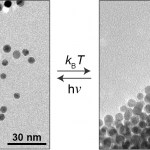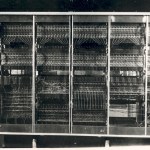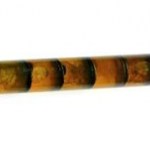Old invention
One day in the future, we may be treating our ailments with microbiotic combinations designed specifically to correct imbalances in our personal microbiomes. We’ll bring our prescriptions on rewritable paper and pay using shimmery optical chips embedded in our cell phone cases or maybe our jewelry. Or we’ll be waiting in our doctor’s office for a simple test of our microbiogenome to see if a light-based nanoparticle delivery treatment is working, while watching iridescent optical displays that change as we move...
These future scenarios (and many more) are all imaginary, but…
Here are some more unsung heroes of research: scanners (the human kind). In the 1950s, Donald Glaser invented the bubble chamber – a way to track infinitesimally small quantum particles as they winked in and out of existence. The idea – which may or may not have been tested in beer – was to create a large chamber of liquid under pressure next to a particle accelerator. As the beams hit their target, producing sprays of new types of short-lived particles, these energetic particles would leave tracks of bubbles in the liquid (usually hydrogen). Everything was caught on arrays of special high-…
Google's official blog has a post today on the first computer in Israel: WEIZAC, built at the Weizmann Institute in the 1950s. Prof. Aviezri Frenkel gives a charming description of the project, including the fireworks when the machine was first turned on, in the presence of the VIPS who had come to see the new wonder.
http://googleblog.blogspot.co.il/2013/06/remembering-weizac-beginning-of.html
The foresight of the scientists who decided to build the computer is mentioned. But we can also thank them for their foresight in preserving this piece of computing history once newer computers…
December's calendar photograph is a battery of five solar cells that also stores electricity in series. The cells were invented and developed at the Weizmann Institute in the late 1970s. These not only converted sunlight into electricity, but also could store some of that energy using a battery-type setup with electrodes in a chemical solution, so that they could provide electricity day and night.
The idea of efficiently storing solar energy has taken more than one twist and turn since then - various forms of artificial photosynthesis, for example. Interestingly enough, one of the latest…



